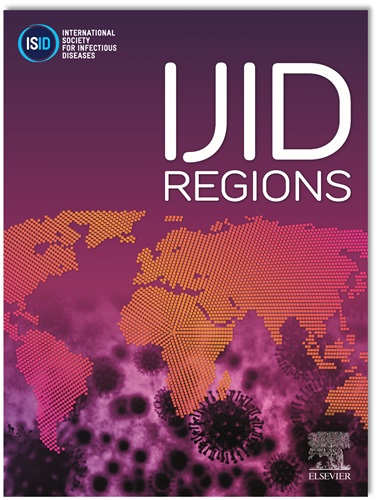Impact of pre-existing comorbidities and multimorbidities, demography and viral variants on post-acute sequelae of COVID-19 (‘Long COVID’) in Dutch primary care: A retrospective cohort study
IF 4.8
2区 医学
Q1 INFECTIOUS DISEASES
引用次数: 0
Abstract
Introduction
Post-acute sequelae of COVID-19 (PASC), or Long COVID, involves persistent symptoms following acute infection, posing a global health challenge. While a growing number of studies have investigated potential predictors and risk factors, uncertainties remain regarding their consistency and clinical applicability. This study investigates PASC prevalence, comorbidities, demographics and viral variants using Dutch primary care electronic healthcare records (EHR).
Methods
A retrospective cohort study used EHR data from 59 general practices in the Northern Netherlands, including 19,638 SARS-CoV-2 PCR-positive patients from January 1, 2020, to December 31, 2021. PASC was identified via World Health Organization and CDC guidelines, a Dutch Word2Vec model, and clinical assessments. Relative risk (RR) calculations analysed comorbidities, demographics and viral variants.
Results
PASC prevalence was 5.8% (95% CI: 5.4-6.1%). Comorbidities significantly increasing PASC risk included lung disease (RR: 1.95), cardiovascular disease (RR: 1.73), diabetes (RR: 1.82), kidney disease (RR: 1.98) and mental illness (RR: 1.29). Females and individuals aged ≥45 had increased risk. Multivariate regression revealed higher odds of prolonged PASC for ages 45-59 (adjusted odds ratios [AOR]: 3.02), 60-74 (AOR: 3.25) and 75+ (AOR: 2.44). Combined mental illness and lung disease further increased risk (AOR: 2.55).
Conclusion
Chronic conditions, multimorbidity and demographics significantly influence PASC onset and duration. Targeted interventions may mitigate its long-term impact.
荷兰初级保健中预先存在的合并症和多病、人口统计学和病毒变异对COVID-19急性后后遗症的影响:一项回顾性队列研究
COVID-19急性后后遗症(PASC)或长冠状病毒病(Long COVID)涉及急性感染后的持续症状,构成全球健康挑战。虽然越来越多的研究调查了潜在的预测因素和风险因素,但它们的一致性和临床适用性仍然存在不确定性。本研究使用荷兰初级保健电子医疗记录(EHR)调查PASC患病率、合并症、人口统计学和病毒变异。方法:一项回顾性队列研究使用了荷兰北部59家全科医院的电子病历数据,其中包括2020年1月1日至2021年12月31日期间19638名SARS-CoV-2 pcr阳性患者。PASC是通过WHO和CDC指南、荷兰Word2Vec模型和临床评估确定的。相对危险度(RR)计算分析了合并症、人口统计学和病毒变异。结果:PASC患病率为5.8% (CI95%: 5.4-6.1%)。显著增加PASC风险的合并症包括肺部疾病(RR: 1.95)、心血管疾病(RR: 1.73)、糖尿病(RR: 1.82)、肾脏疾病(RR: 1.98)和精神疾病(RR: 1.29)。女性和年龄≥45岁的个体风险增加。多因素回归显示,45-59岁(AOR: 3.02)、60-74岁(AOR: 3.25)和75岁以上(AOR: 2.44)的PASC延长几率较高。合并精神疾病和肺部疾病进一步增加风险(AOR: 2.55)。结论:慢性疾病、多发病和人口统计学因素显著影响PASC的发病和持续时间。有针对性的干预措施可能减轻其长期影响。
本文章由计算机程序翻译,如有差异,请以英文原文为准。
求助全文
约1分钟内获得全文
求助全文
来源期刊
CiteScore
18.90
自引率
2.40%
发文量
1020
审稿时长
30 days
期刊介绍:
International Journal of Infectious Diseases (IJID)
Publisher: International Society for Infectious Diseases
Publication Frequency: Monthly
Type: Peer-reviewed, Open Access
Scope:
Publishes original clinical and laboratory-based research.
Reports clinical trials, reviews, and some case reports.
Focuses on epidemiology, clinical diagnosis, treatment, and control of infectious diseases.
Emphasizes diseases common in under-resourced countries.

 求助内容:
求助内容: 应助结果提醒方式:
应助结果提醒方式:


